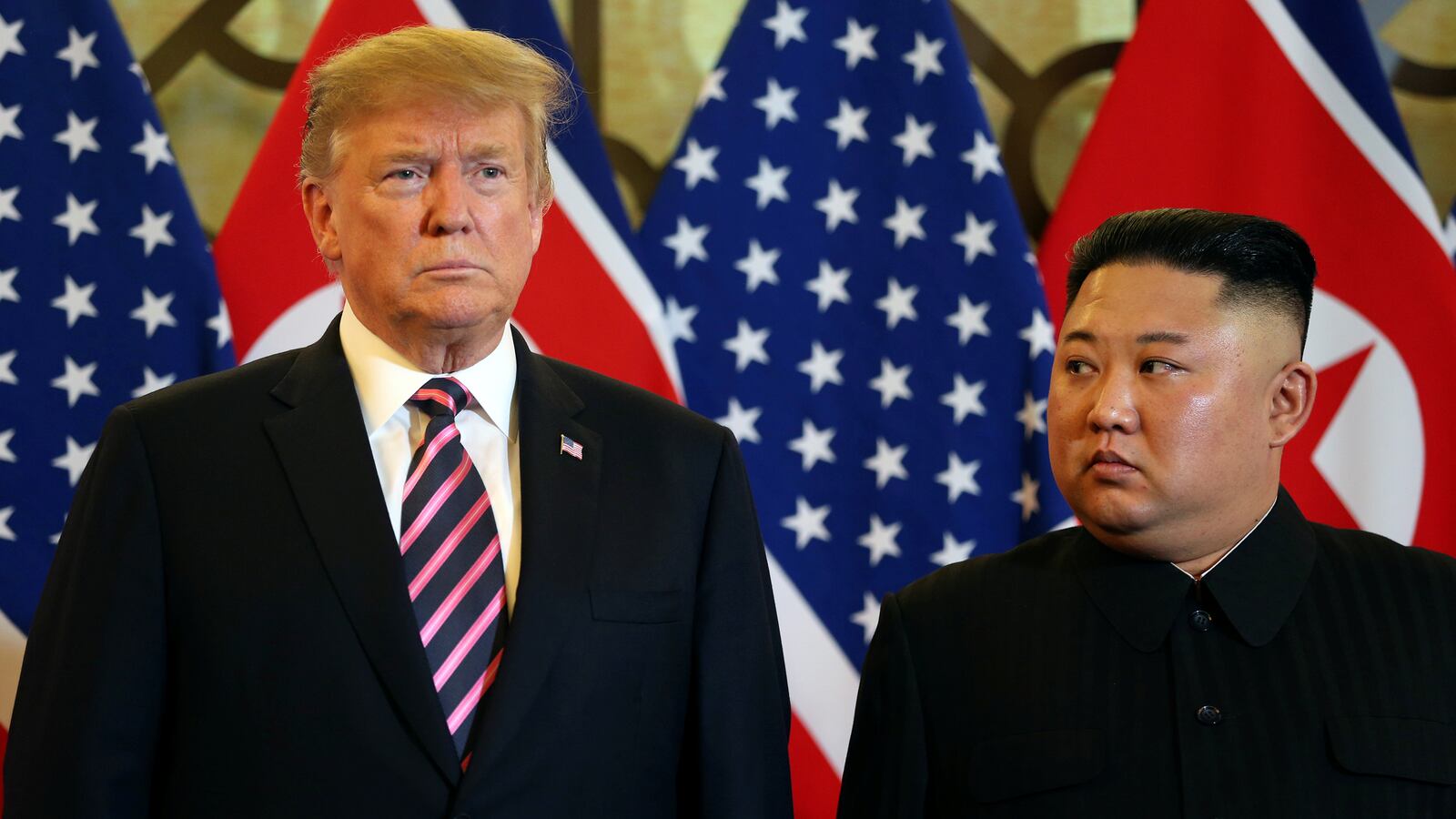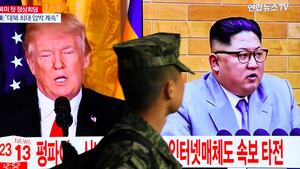Nothing about the Hanoi summit’s outcome is a surprise. The writing was on the wall, the president just refused to read it.
President Donald Trump’s failure to engage in the most basic preparatory work for this summit—and his longstanding penchant for putting personal convictions ahead of his experts’ opinions—meant that there was no way that he could have come out of this summit with a denuclearization deal.
I helped prep President Barack Obama for high-level meetings, and President Trump’s failure to engage in the first step of any presidential meeting prep was a strong indicator that this summit was doomed to fail.
Typically, summit prep begins with the president and his intelligence community agreeing on a baseline assessment of the state-of-play, in this case the status of North Korea’s nuclear program and Kim Jong Un’s intentions. The intelligence community’s assessment that North Korea will not denuclearize, the open-source analysis that Pyongyang is still proliferating weapons of mass destruction, and reporting that North Korea is taking extra steps to disburse its arsenal seemingly fell on deaf ears.
In January President Trump said that his intelligence community was wrong on North Korea and there’s reporting that he put more faith in Vladimir Putin’s North Korea analysis (which is never unbiased) underplaying North Korea’s missile threat than he did in the U.S. intelligence community’s analysis.
Without presidential agreement on a baseline assessment on North Korea’s program and Kim’s intentions, it was clear that President Trump couldn’t have been fully prepping with his own, home team. Absent an agreed upon assessment, there was no way to identify a realistic goal for the summit or a strategy to achieve it.
Because President Trump still thought that denuclearization was possible heading into the Hanoi Summit–based on his own personal assessment (or Putin’s) of Kim Jong Un’s intentions–his goals for the Summit were out of touch with reality.
The intelligence community assessed that Kim wouldn’t denuclearize, but instead of taking a step back and reassessing what we could realistically get from Kim—a nuclear freeze vs. denuclearization for example—President Trump went into the summit with unachievable goals.
Because he didn’t prepare appropriately and fully understand his counterpart’s intentions in this complex negotiation he pushed for something that none of his intelligence experts thought he would ever get.
It’s clear that President Trump’s counterparts do their homework. They study what makes him tick. It’s no accident that North Korean state media condemned Democrats for “chilling the atmosphere” ahead of the Hanoi Summit or that Kim has consistently flattered President Trump personally. Stoking partisan divisions and flattering the president are two ways to get on his good side.
If the president had done real preparatory work, and listened to his team, he would not have agreed to meet with Kim Jong Un one-on-one. Kim has tried to play to the president’s personal narcissism—including with love letters—and has put most nuclear negotiations in the leader-to-leader track rather than allowing experts from both sides to have the time and space to negotiate. This isn’t because Kim likes alone time with the president but rather because he knows the president is softest when he’s by himself, without experts and too often without accountability.
Unfortunately, President Trump didn’t do his own prep work on Kim Jong Un. Any basic skimming of even open source media would show that sanctions relief is at the forefront of Kim’s wish list. His patrons in Beijing and elsewhere have pushed for it and it’s Kim’s holy grail.
Because U.S. and North Korean experts met so infrequently, working out the details of denuclearization in exchange for phased sanctions relief wasn’t really possible at a detailed level. Allowing empowered sanctions and denuclearization experts to meet with North Korean counterparts well ahead of the summit would have allowed them to report back to President Trump on Kim’s red lines and his demands.
President Trump’s decision to walk rather than sign a second, superficial communique, is the only surprising thing about what happened in Hanoi. He did something out of character in Vietnam by walking away from Kim Jong Un and acknowledging that their personal relationship—something he’s put a lot of personal faith in—couldn’t carry the two leaders to a substantive denuclearization deal.
That’s no cause for celebration anywhere but Pyongyang. The President’s own statements that “I’d much rather do it right than do it fast” may be the best outcome for Kim. Time is on Kim’s side, and while he keeps proliferating weapons and new global relationships, we are freezing major military exercises, at least while we determine next steps.
President Trump has, at the least, cemented the status quo: North Korea as a nuclear power that is increasingly normalized on the world stage.
President Trump is known for viewing the world in pretty black and white shades, and if he does any substantive debriefing with his team and realizes that he has in fact been played for the last 12 months, it is also entirely possible that we see a return to the 2017 “fire and fury” president which, undoubtedly, would be met with responses from Kim himself.
The president’s failure to engage in real prep—before his rushed Singapore Summit with Kim and before this latest summit in Vietnam—means that North Korea has had 12 more months to become stronger, not only because Kim did his prep work. He said earlier that he wants to do things “right” not “fast” but his addiction to doing things fast, not right, is what got us here in the first place.






